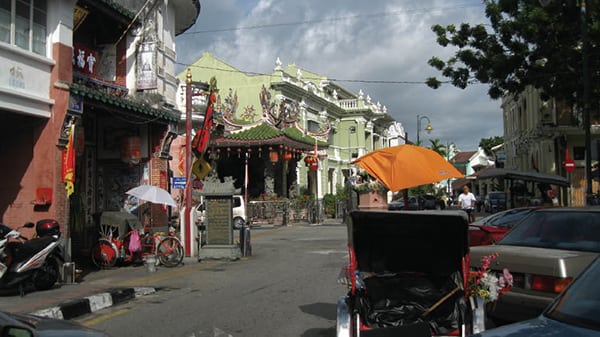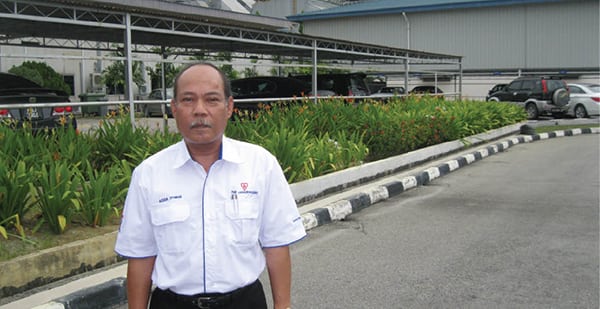Coal in Favor as Malaysia Increases Its Installed Capacity
Attendees at the third annual Asian Sub-Bituminous Coal Users’ Group learned details about Southeast Asia’s first 1-GW supercritical coal-fired power plant and heard of plans to expand coal’s use further across the region.
Malaysia’s largest power provider considers coal to be an important fuel for future growth as the Southeast Asian nation of nearly 30 million people works to diversify its generation portfolio away from natural gas even as it meets growing demand for electricity.
Attendees at the third annual Asian Sub-Bituminous Coal Users’ Group (ASBCUG) in George Town, Penang, Malaysia (Figure 1) in October saw evidence of that commitment to coal during a visit to the Stesen Janakuasa Sultan Azlan Shah power plant, a 3 x 700-MW coal-fired power plant equipped with Alstom turbines that entered service in 2003. The power plant is sited on reclaimed land next to the Straits of Malacca on the country’s west coast. Work is underway at an adjacent location on a 1,000-MW supercritical coal-fired unit—also using Alstom technology—that is slated to enter service in March 2015. Conference attendees also heard Tenaga Nasional Bhd (TNB) Vice President of Generation Zainuddin Ibrahim say that the company will build two more 1,000-MW coal-fired power plants by 2017.
Zainuddin said Malaysia’s electricity demand is growing at a 2.9% annual rate and that TNB currently generates 35% to 40% of its electricity from coal, 50% from natural gas, and the remainder from renewable energy, including hydroelectricity. Asia as a whole obtains around two-thirds of its electricity from coal-fired power plants, he said.
“Our aim is to give the most cost-efficient supply of electricity,” Zainuddin told reporters on the sidelines of the annual conference, which is organized by TradeFair Group, publisher of POWER. He said coal ranks as one of Malaysia’s most important energy sources and that more than 80% of the fuel is imported from Indonesia, South Africa, and Australia.
TNB is the country’s largest utility and is one of the ASBCUG’s founding utilities. Other founders include CLP Power Hong Kong, the Electricity Generating Public Co. Ltd. (EGCO) of Thailand, Hong Kong Electric, Taiwan Power, Korea Southeast Power (KOSEP), and the U.S.-based Powder River Basin Coal Users’ Group.
Coal Plant Visit
Two motor coaches took ASBCUG attendees to TNB’s 2,100-MW Stesen Janakuasa Sultan Azlan Shah power plant (Figure 2), a three-hour drive from the UNESCO World Heritage city of George Town. The power plant’s three subcritical units entered service between April and September 2003 and operate with main steam and reheat steam temperatures of 540C. The boilers are two-pass, drum-type boilers with seven elevations of tangential firing coal burners and four elevations of distillate oil burners. At 100% load the station burns 320 tons of coal per hour. The station’s coal yard can accommodate a 30-day supply of coal.
Since the station entered service, operators have burned 43 different brands of bituminous and subbituminous coal. That represents a total burn of around 48.4 million tons of subbituminous coal and 9.1 million tons of bituminous coal.
Azizul Othman, operations manager, said the plant meets World Bank standards for emissions. It achieves those standards by using flue gas desulfurization and electrostatic precipitators. Low-NOX burners as well as low-sulfur subbituminous coal also help achieve emission goals, which are 50 mg/Nm3 for particulates, 750 mg/Nm3 for sulfur dioxide, and 650 mg/Nm3 for nitrogen oxide. The plant does no on-site coal blending. Instead, ships’ holds are unloaded at an offshore jetty and the coal is conveyed to the plant’s coal yard. The plant’s boilers then burn one shipload of coal at a time.
Nearby, work is underway on what is expected to be Southeast Asia’s first supercritical coal-fired boiler at the 1,000-MW Manjung 4 unit. Work on the project began in March 2011, and the facility is expected to begin producing electricity for Malaysia’s national grid in early 2015, said Rosli Mohammad Appandi, who heads TNB’s boiler, coal, and ash operations. The unit is expected to be anywhere from 37% to 41% efficient and achieve a heat rate ranging from 9,200 Btu/kWh to 8,300 Btu/kWh. The 80-meter-tall two-pass boiler will be equipped with a pulverizer and dynamic classifier. Fabric filters will be installed to handle particulate control instead of electrostatic precipitators.
Appandi said the unit’s personnel are currently in training using both simulators and on-site training at an overseas power plant. As required by the project lender, TNB has also hired a technical service advisor to assist with power plant operations for its first two years of service.
Coordinating with Malaysia’s national load dispatch center is likely to be complex, he said, since this will be the first time that 1 GW of capacity will come from a single unit. Not surprisingly, the unit runs best at baseload, and Appandi said any request to reduce the plant’s output could negatively impact its overall efficiency. A second challenge involves preparing contingency plans should the unit trip offline.
Mercury Strategies
Mercury emissions also were a topic of discussion during the two-day conference. The Minamata Convention on Mercury, named after a Japanese city where industrial emissions of mercury caused a poisoning disease that affected thousands of people, was signed by multiple nations in early October. It aims to prevent health damage and environmental pollution. The convention was adopted at an international conference organized by the United Nations (UN) Environment Program and drew delegates from 140 nations.
The pact will take effect 90 days after it is ratified by at least 50 nations and maps out measures to curb health and environmental damage caused by mercury. Lesley Sloss, principal environmental consultant for the International Energy Agency’s Clean Coal Center, told ASBCUG attendees that the UN Environmental Program had named mercury as the greatest danger globally, and that perhaps 25% of mercury releases to the environment may come from power plants. She said Asia is a primary focus for mercury reductions given the amount of coal burned for power production across the region.
She said that although the United States was among the first to initiate mercury controls, Canada was the first to adopt emission limits in 2010. Ontario complied in part by closing all of its coal-fired power plants, she said. (For more on Ontario’s coal phaseout, see “Ontario Goes Coal-Free in a Decade” in the May issue of POWER.)
The U.S. emission standards are particularly stringent and require mercury reductions of between 90% and 95%, she said. The standard was set based on emissions from the top 12 performing coal-fired plants, and compliance may be achieved through approaches that include both wet and dry flue gas desulfurization, dry sorbent injection, selective catalytic reduction (SCR), activated carbon injection, and baghouse and fabric filters. (See “Optimized SCR Catalysts Maximize Mercury Removal Co-Benefits” in this issue.)
Sloss said that many U.S. power generators have found compliance to require a “significant investment,” but that compliance with the Minamata Convention standards may be a less-expensive undertaking. Relatively simple steps such as fuel switching, operating adjustments, and coal washing may be effective mitigation tools. Sloss said that a 5% to 10% blend of bituminous with subbituminous coal could add sufficient amounts of chlorine and potassium to enhance mercury’s conversion to an oxidized state, which may be captured at rates of up to 90%.
Other Regional Coal-Burning Concerns
Attendees also heard Rod Hatt, president of Coal Combustion Inc., discuss challenges operators face due to variations in coal quality. He said that because coal originates from fossilized swamps, wide variability in coal quality should be expected, even from a single seam in a mine. What’s more, he said sampling techniques and standards have not evolved much over the decade. This means that broad variations in coal quality may exist but remain unidentified.
As one example, he said that coal volatility refers to the amount of smoke a particular coal produces, a gauge first identified in the mid-1800s by naval commanders and used as a means to measure how visible their warships might be under full steam. “We’re using 1880s technology in 2013,” he said.
Doug Hart, firing systems manager at Alstom Power, extended the discussion about coal to note that low-rank coals tend to burn easier, but they also may spontaneously combust on the coal pile. He said subbituminous coal produces lower NOX and SO2 emissions, but at the expense of a lower heat value and higher moisture content. Hatt said that lower NOX can detune a boiler and increase the amount of slagging. Combustion efficiency also may be affected, he said.
Hart pointed to a variety of systems that may need to be modified or upgraded by a power plant that burns subbituminous coal. Those systems include mills, high-velocity coal piping, burners, the furnace, air heaters, and induction fans.
The 2014 Asian Sub-bituminous Coal Users’ Group conference will be held in Bangkok, Thailand. Visit www.asiansbcusers.com for details. ■
— David Wagman is content director for the ELECTRIC POWER Conference, which takes place April 1–3, 2014, in New Orleans. Visit www.electricpowerexpo.com for details.

